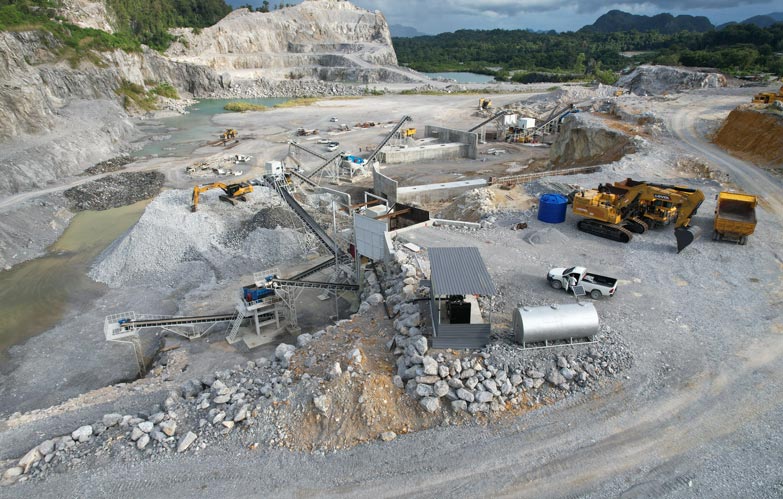Operating a stone crushing plant comes with its own set of risks. The machinery involved in crushing stone, whether it’s a limestone crusher or a general stone crusher, is powerful but vulnerable to wear and tear. Ensuring that the plant operates safely begins with regular checks and maintenance of key parts that are prone to damage. These vulnerable components are often the ones that, if neglected, can cause accidents, delays, or costly repairs. In this article, we’ll explore the critical parts that need attention to ensure the safe and efficient operation of stone crushing plants.
Identifying Vulnerable Parts in a Stone Crushing Plant
Stone crushing plants(que es una planta trituradora) are complex systems with various moving parts that work together to crush and process raw materials into aggregates. These plants often operate in harsh conditions, making certain parts more susceptible to damage over time. Whether it’s a limestone crusher or a stone crusher used for general applications, all equipment in the plant must be regularly inspected to avoid potential safety hazards and operational downtime.
While there are many components in a stone crushing plant that require attention, there are a few vulnerable areas that need particular focus. These include:
1. Crushing Chamber
The crushing chamber is the heart of any stone crushing plant. It’s where raw materials, such as limestone(trituradora de piedra caliza), are fed into the system for crushing. Over time, the wear parts in the crushing chamber, including the liners and hammers, can become worn out, affecting the efficiency and safety of the crusher. A damaged crushing chamber can lead to blockages or even catastrophic failures, which can cause significant safety risks for workers.
Regular checks of the liners and hammers should be conducted to ensure they are in good condition. Replacing these components before they are too worn can prevent costly downtime and ensure the crusher runs smoothly.
2. Feeders and Conveyors
Feeders and conveyors are essential in ensuring that raw materials are continuously and safely delivered to the crushing equipment. Over time, these parts can become misaligned or develop blockages, leading to uneven feeding of materials into the stone crusher(trituradora de piedra en mexico). This not only affects the efficiency of the operation but can also lead to mechanical failure.
Inspecting feeders for wear and ensuring that the conveyor belts are properly tensioned are crucial steps in preventing safety hazards. Furthermore, checking the condition of the motors that drive the feeders and conveyors is important to avoid unexpected breakdowns that could halt production.
3. Bearings and Shafts
Bearings and shafts are some of the most important moving parts in a stone crushing plant. These components are responsible for transmitting mechanical power from the motor to the crushing equipment. Due to constant movement and heavy loads, bearings and shafts are highly prone to wear and overheating, which can result in severe damage if not maintained regularly.
Lubricating bearings and checking for any signs of overheating or unusual noise should be part of routine maintenance. Replacing worn bearings before they cause shaft misalignment or damage is vital for maintaining the plant’s safety and efficiency.
4. Electrical Systems and Control Panels
The electrical system of a stone crushing plant controls everything from the motors to the safety mechanisms. A malfunctioning electrical system can pose serious risks, such as equipment failure or even fires. It is essential to regularly inspect the electrical wiring, control panels, and circuit breakers for signs of wear or damage.
Check for loose connections, frayed wires, or burnt components, as these could be indicative of a potential problem. Ensuring that the plant’s electrical system is fully operational reduces the risk of unexpected shutdowns and hazards.
5. Dust Collection and Ventilation Systems
Stone crushing plants are known for producing large amounts of dust, which can pose serious health risks to workers. A well-maintained dust collection and ventilation system is essential for ensuring that the plant remains safe for operators. If the dust collection system becomes clogged or inefficient, it can lead to hazardous conditions and even fires.
Regularly inspect the dust collection system to ensure that filters are clean and functioning. In addition, ensure that the ventilation system is adequately removing dust from the air to create a safe working environment for plant personnel.
Maintenance Practices to Ensure Safe Operation
Ensuring that all vulnerable parts are regularly maintained is crucial to the safe operation of a stone crushing plant. Below are some key maintenance practices that can help you keep your equipment in top condition:
1. Scheduled Inspections
Routine inspections should be scheduled to check for wear and tear on key components such as the crushing chamber, feeders, and electrical systems. These inspections should be carried out by trained professionals who are familiar with the operational risks associated with stone crushing plants.
2. Preventative Maintenance
Implementing a preventative maintenance program ensures that issues are addressed before they escalate. For example, replacing worn-out parts such as crusher liners or conveyor belts can prevent sudden breakdowns, keeping the plant running smoothly and safely.
3. Operator Training
Properly training operators to identify potential risks and signs of malfunction can make a significant difference in the safety of a stone crushing plant. Operators should be familiar with all safety protocols and how to conduct preliminary checks to catch potential problems early.
Conclusion
The first step to ensuring the safe operation of a stone crushing plant is to regularly inspect and maintain its vulnerable parts. Key components such as the crushing chamber, feeders, bearings, electrical systems, and dust collection systems must be checked frequently to prevent accidents and costly downtime. By implementing routine inspections and preventative maintenance, stone crushing plants, including limestone crushers and other stone crushers, can operate efficiently and safely, minimizing risks for workers and maximizing productivity.


Comments
No comments yet. Be the first to react!